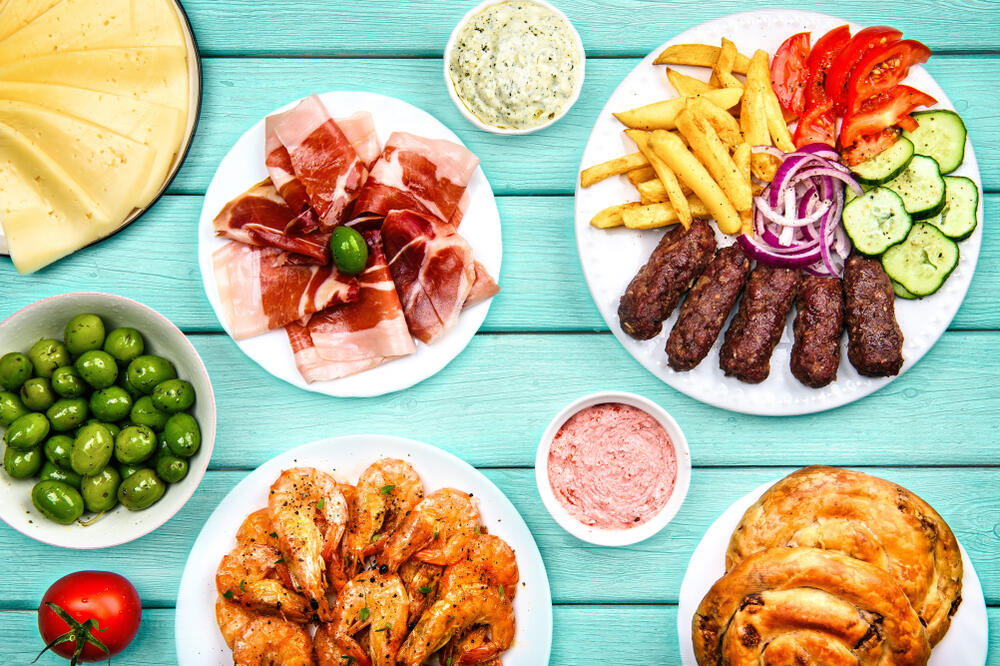Key Highlights
- Montenegro offers a diverse range of culinary delights, influenced by its geographic location and neighboring countries.
- Traditional Montenegrin dishes include seafood delicacies, Njeguši prosciutto and cheese, traditional meat dishes, burek, kačamak, palačinke, crni rižot, and local wines.
- Montenegro's coastal and mountainous regions offer contrasting culinary experiences.
- Montenegrin dining etiquette and cultural traditions enhance the overall culinary experience.
- Vegetarian and vegan options are available in Montenegrin cuisine, with an emphasis on olive oil and Mediterranean flavors.
- The average cost of a meal in Montenegro for tourists is affordable compared to other European destinations.
Exploring the Culinary Wonders of Montenegro
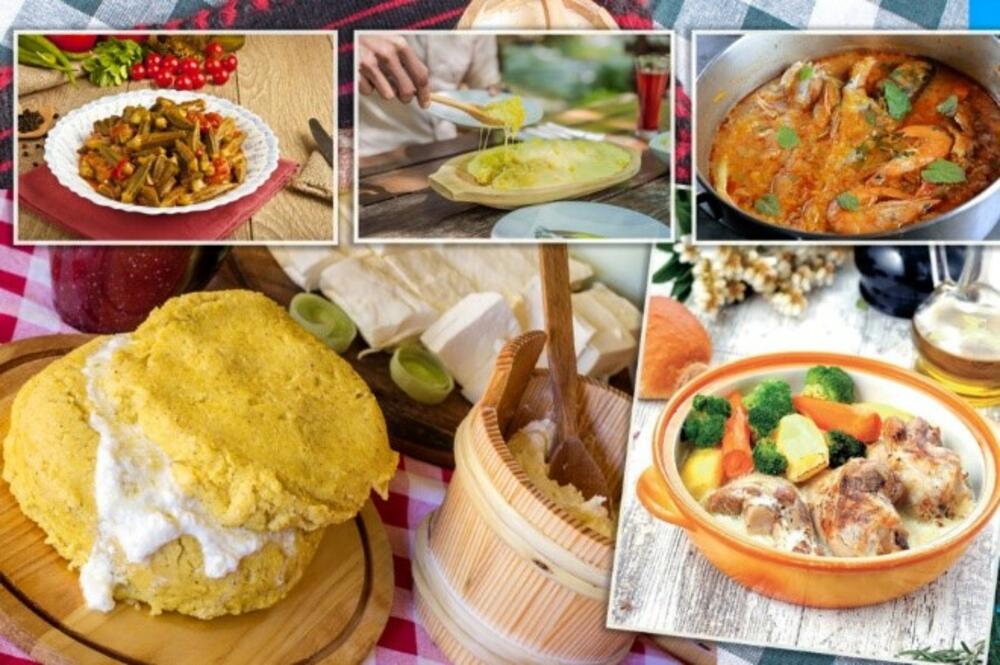
Montenegro offers a rich culinary experience that showcases traditional Montenegrin dishes and the influence of the Adriatic coast. From fresh seafood to traditional meat dishes, Montenegro's cuisine is a fusion of flavors from neighboring countries and its own unique traditions. Whether you're exploring the coastal towns or venturing into the mountainous regions, Montenegro's culinary wonders, including the famous Balkan pita, are sure to leave a lasting impression.
1. Discovering Montenegro's Seafood Delicacies
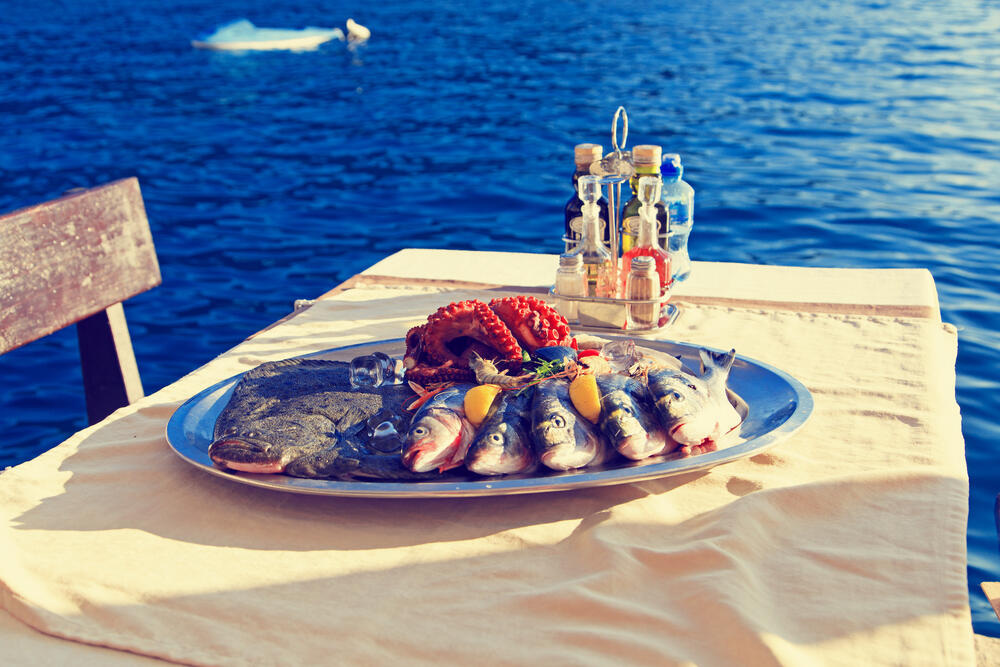
Montenegro's proximity to the Adriatic Sea means that seafood plays a significant role in its culinary scene. The coastal towns are renowned for their freshly caught seafood delicacies, including prawns, squid, octopus, tuna, and mussels. Here are some must-try seafood dishes in Montenegro:
- Grilled or fried squid: Enjoy the tender and flavorful squid, cooked to perfection on a grill or pan-fried.
- Octopus salad: Indulge in a refreshing salad made with tender octopus, mixed with fresh vegetables and a tangy dressing.
- Black risotto (crni rižot): A unique dish made with squid ink, giving it a rich black color and a unique flavor.
- Fresh seafood platter: Sample a variety of seafood delights, including prawns, mussels, and fish, all served together for a true taste of the Adriatic.
Montenegro's seafood dishes reflect the country's coastal charm and the bounty of the Adriatic Sea.
2. The Rich Flavors of Njeguši Prosciutto and Cheese
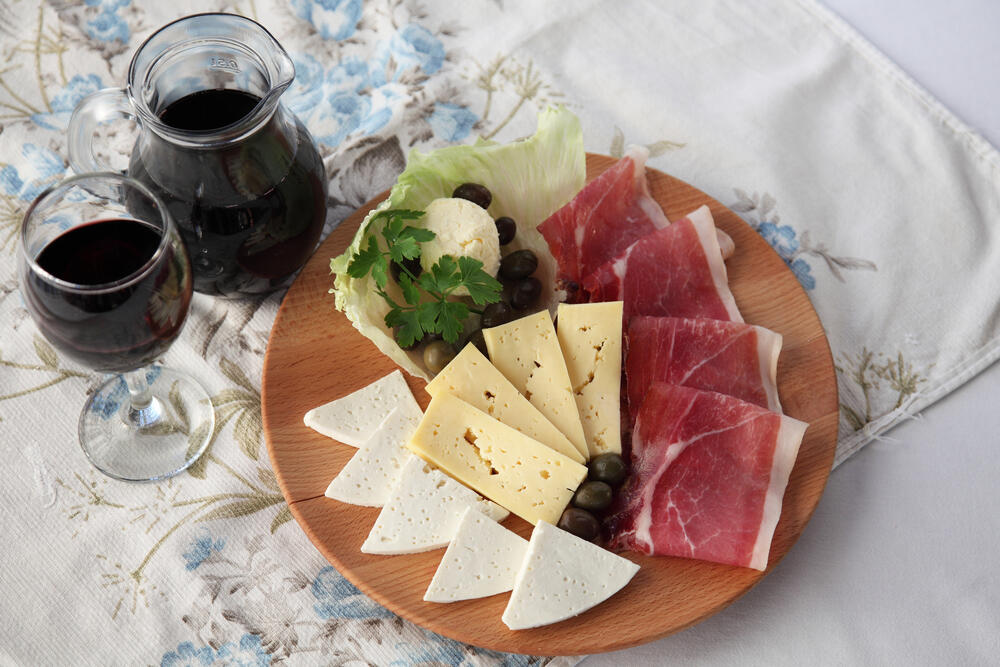
Montenegro is known for Njeguši prosciutto and cheese, a traditional delicacy from the village of Njeguši. Made from pig hind legs, it is salted and air-dried with for months. This tender ham has a rich aroma and savory taste, perfect for appetizers or charcuterie platters.
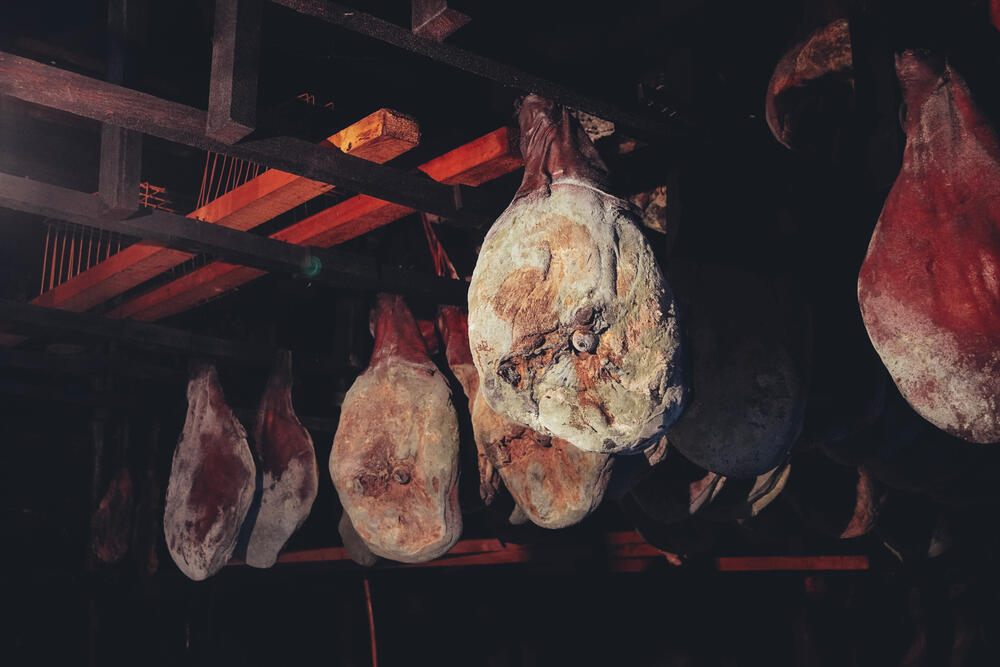
To complement the prosciutto, Njeguški cheese is often served alongside. This cheese is made from cow's milk and has a salty and tangy flavor. It pairs perfectly with the prosciutto, creating a harmonious blend of flavors. When visiting Montenegro, be sure to try this iconic duo of Njeguši prosciutto and cheese for a true taste of the country's culinary heritage.
3. Traditional Montenegrin Meat Dishes: A Must-Try
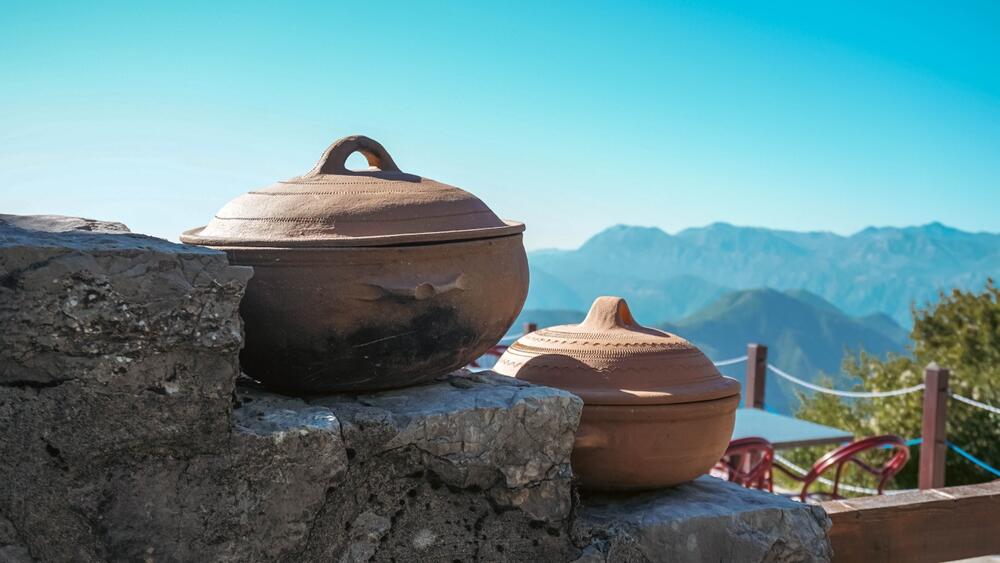
Meat lovers will be delighted by the array of traditional Montenegrin meat dishes available. Montenegrin cuisine places a strong emphasis on the use of quality ingredients and slow-cooking techniques, resulting in rich and flavorful dishes. Here are some must-try meat dishes in Montenegro:
- Veal or lamb under the bell (ispod sača): This cooking method involves slow-cooking meat and vegetables in a covered metal dome. The result is tender and succulent meat with a smoky flavor.
- Balšića tava: This dish features boiled veal that is roasted in a pan and combined with a delicious sauce made from eggs, milk, and sour cream.
- Grilled meats: Montenegrins are known for their expertise in grilling meats. Try grilled sausages (ćevapi) or mixed meat platters for a flavorful and satisfying meal.
These traditional Montenegrin meat dishes showcase the country's culinary heritage and are a must-try for meat enthusiasts.
4. Savoring the Unique Taste of Burek

Burek is a beloved dish in Montenegro and throughout the Balkans. It is a flaky pastry filled with various ingredients, such as cheese, meat, spinach, or potato. Burek has its origins in the Ottoman Empire and has become a staple in Balkan cuisine.
The pastry is made by layering thin sheets of phyllo dough and filling it with the desired ingredients. It is then baked until golden brown and crispy. The result is a delicious savory pastry that can be enjoyed as a breakfast dish, a snack, or even a main course.
In Montenegro, burek is often enjoyed with a side of plain yogurt or sour cream. The combination of the flaky pastry and the creamy filling creates a harmonious balance of flavors and textures.
5. Montenegro's Comfort Food: Kacamak
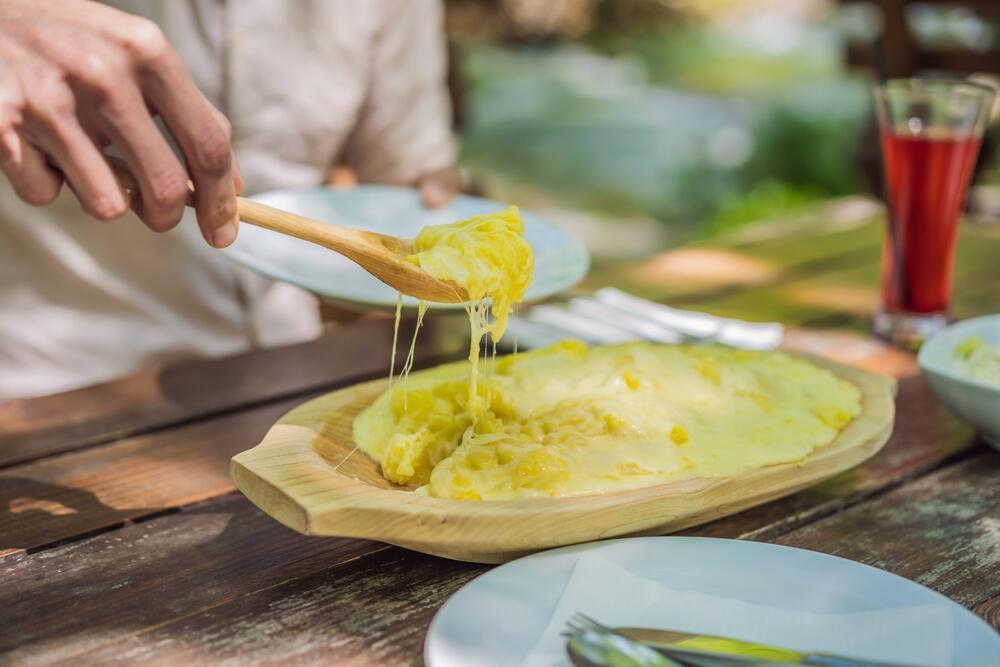
Kacamak is a traditional Montenegrin comfort food made from cornmeal, akin to porridge. Served with butter, cheese, and cold milk or yogurt, this hearty dish warms the soul. Slowly cooked in water or milk until creamy, it's perfect for winter days or breakfast.
Kacamak is a staple in Montenegrin cuisine and is often enjoyed as a main course or as a side dish with meat or stews. Its simple ingredients and rich flavors make it a beloved comfort food among locals and visitors alike. When in Montenegro, be sure to try kacamak for a taste of traditional Montenegrin comfort food and to experience the country's culinary culture.
6. Indulging in Sweet Palačinke
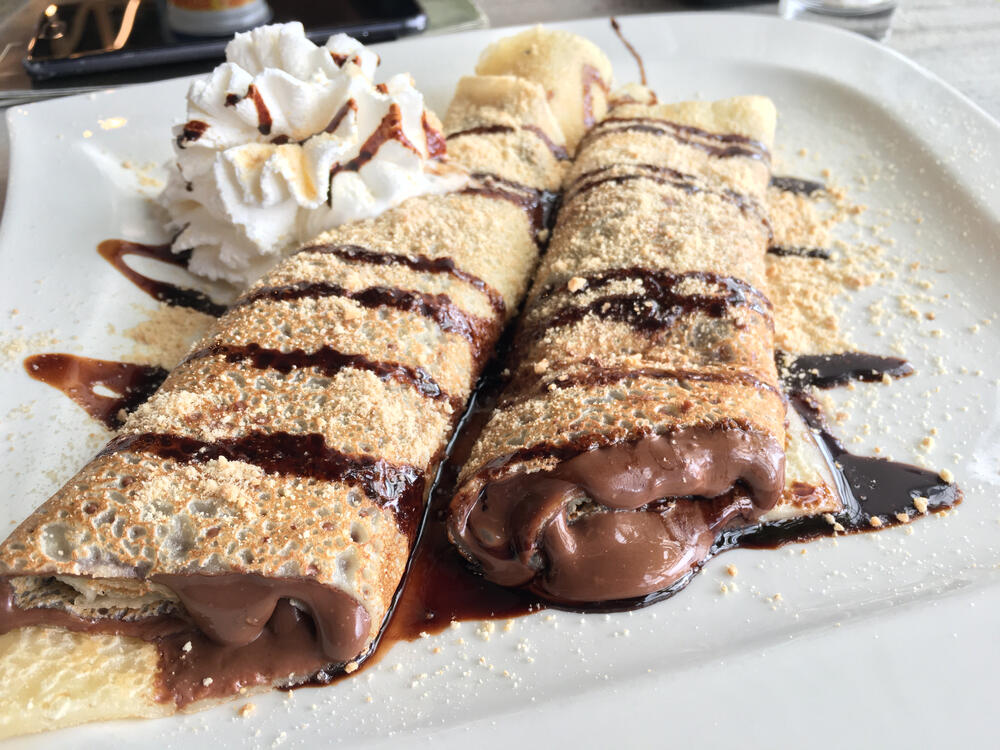
No culinary journey in Montenegro is complete without indulging in sweet palačinke. Palačinke are thin pancakes that can be enjoyed with a variety of sweet fillings and toppings. Here are some popular options to try:
- Chocolate cream spread: Spread a generous amount of chocolate cream on the pancake and roll it up for a decadent treat.
- Jam or fruit compote: Fill the pancake with your favorite jam or fruit compote for a burst of fruity goodness.
- Honey and walnuts: Drizzle the pancake with honey and sprinkle it with crushed walnuts for a delightful combination of flavors and textures.
- Sugar: As palačinke are very nice flavored on their own, try it with adding some sugar and rolling it.
Palačinke are a beloved dessert in Montenegro and are often enjoyed on special occasions or as a sweet treat any time of the day. Be sure to save room for palačinke during your culinary adventure in Montenegro.
7. The Art of Preparing Crni Rižot
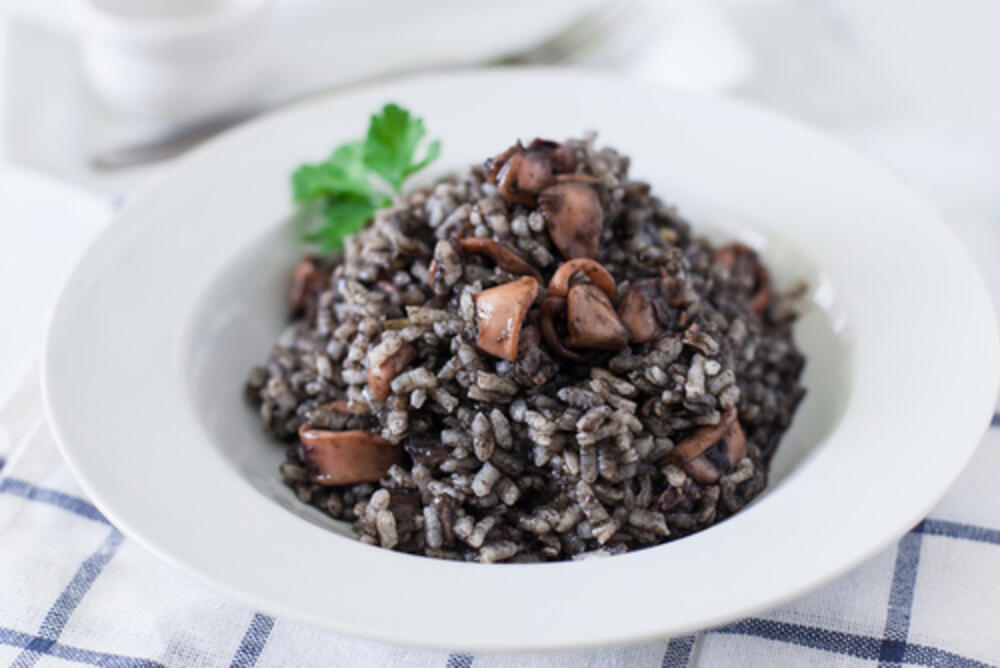
Crni rižot, or black risotto, is a unique dish that showcases the flavors of the Adriatic Sea. It gets its distinctive black color from the addition of squid ink, which also imparts a rich seafood flavor to the dish. Here's a step-by-step guide to preparing crni rižot:
Ingredients:
- Arborio or Carnaroli rice
- Squid or calamari
- Onion
- Garlic
- White wine
- Fish or vegetable broth
- Olive oil
- Parmesan cheese
- Salt and pepper
Preparation:
- Clean and prepare the squid, separating the ink sacs from the rest of the body.
- Sauté the chopped onion and garlic in olive oil until translucent.
- Add the rice and cook for a few minutes, stirring constantly.
- Add white wine and let it reduce.
- Gradually add the fish or vegetable broth, stirring continuously, until the rice is cooked and has absorbed the liquid.
- In a separate pan, cook the squid with olive oil and the ink sacs.
- Add the squid to the cooked rice, along with grated Parmesan cheese and season with salt and pepper.
- Stir well to combine all the ingredients and let the flavors meld together for a few minutes.
- Serve hot and enjoy the unique flavors of crni rižot.
Crni rižot is a must-try dish for seafood lovers, offering a unique taste of Montenegro's culinary heritage.
8. Sampling the Best of Montenegro's Wineries
Montenegro is known for its quality wines, particularly the indigenous grape variety known as Vranac. When visiting Montenegro, a visit to the local wineries is a must to experience the country's rich winemaking traditions.
During your winery visits, you'll have the opportunity to taste a variety of wines, including Vranac, which is known for its rich, dark fruit flavors and firm tannins. It's the perfect way to immerse yourself in Montenegro's wine culture and savor the flavors of the region.
9. Unveiling the Secrets of Montenegrin Olive Oil
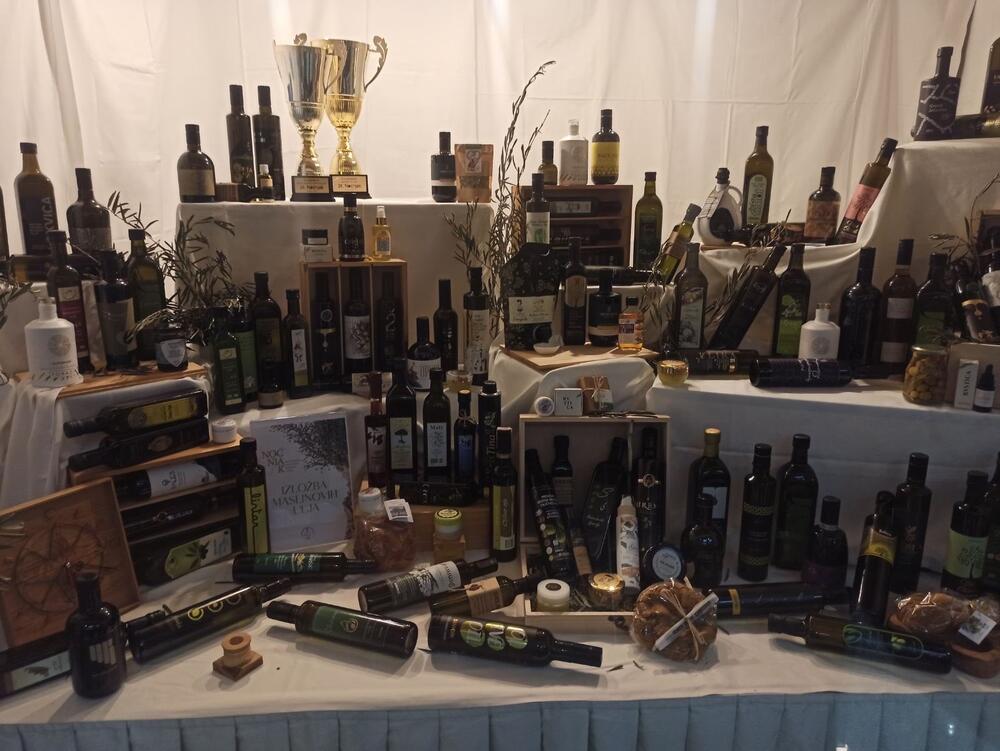
Montenegro's olive oil is a hidden gem of the country's culinary heritage. The Mediterranean climate and fertile soil provide the perfect conditions for olive tree cultivation, resulting in high-quality olive oil. Montenegrin olive oil is known for its rich and fruity flavors, with hints of grassiness and a peppery finish.
The traditional production methods, which involve hand-picking and cold-pressing the olives, ensure that the oil retains its natural flavors and health benefits. Montenegrin olive oil is often used in salads, marinades, and as a finishing touch to various dishes. Its versatility and unique taste make it a prized ingredient in Montenegro cuisine.
When visiting Montenegro, be sure to sample the local olive oil and learn about the traditional production methods. You'll discover the secrets behind this golden elixir and gain a deeper appreciation for its role in Montenegro's culinary culture.
10. Montenegro's Coffee Culture: Beyond the Bean
Montenegro's coffee culture is deeply ingrained in the country's social fabric. Coffee is not just a beverage; it's a way of life. Montenegrins take their coffee rituals seriously and often gather with friends and family at local cafés to socialize and enjoy a cup of coffee.
The coffee culture in Montenegro has been influenced by the country's Ottoman past, with Turkish-style coffee being the traditional choice. Turkish coffee is strong, thick, and served in small cups. The preparation involves boiling finely ground coffee beans with water and sugar, creating a rich and aromatic brew.
Montenegro's Signature Beverages
Montenegro is known for its signature beverages that reflect the country's culinary heritage and natural surroundings. Two notable beverages to try are:
- Rakija: This strong fruit brandy, enjoyed throughout the Balkans, is a staple of Montenegrin culture. It is made from various fruits, such as plums, grapes, or apricots, and is often consumed as an aperitif or digestif.
- Vranac: This indigenous grape variety produces robust and full-bodied red wines. Vranac wines are known for their dark fruit flavors and firm tannins, making them a perfect pairing for Montenegrin cuisine.
These signature beverages offer a taste of Montenegro's rich culinary heritage and reflect the country's vibrant Mediterranean culture.
The Legacy of Rakija: Montenegro's Spirit

Rakija is a traditional spirit deeply ingrained in Montenegrin culture. This strong fruit brandy is considered the national drink of Montenegro and is enjoyed throughout the Balkans. Rakija is typically made by distilling fermented fruit, such as plums, grapes, or apricots. The result is a potent and flavorful spirit that is often consumed as an aperitif or digestif.
Rakija holds a special place in Montenegrin traditions and is often associated with hospitality and celebration. It is frequently offered to guests as a gesture of welcome and is a symbol of friendship and camaraderie. Many Montenegrin families take pride in producing their own Rakija, using traditional methods that have been passed down through generations.
Vranac Wine: A Taste of Montenegro's Vineyards
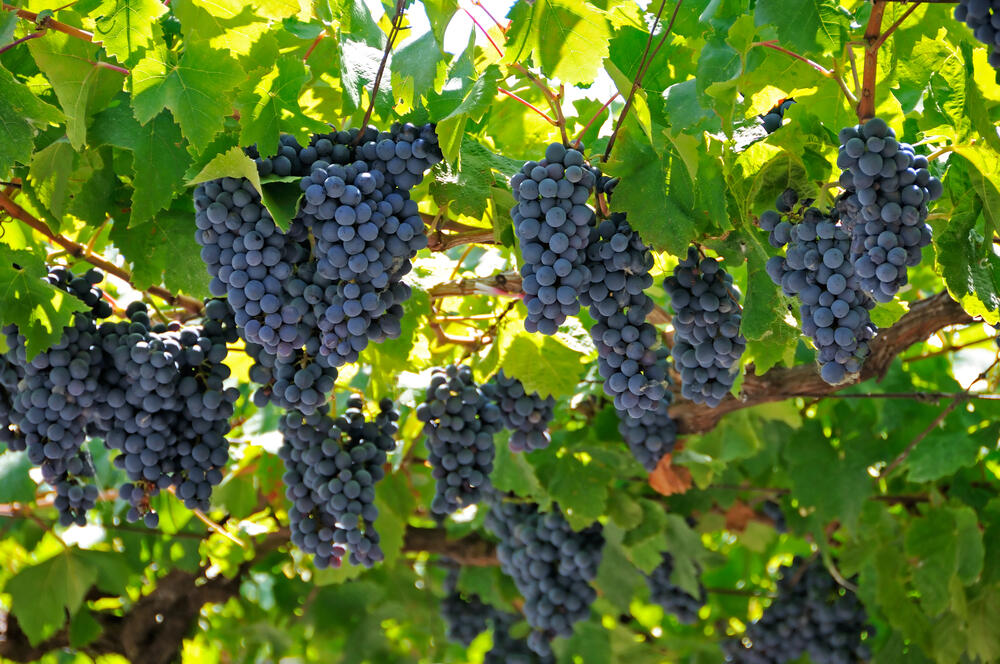
Vranac is an indigenous grape variety that is the pride of Montenegro's vineyards. This robust red wine is known for its deep color, rich flavors, and firm tannins. Vranac grapes are grown in the fertile valleys and hillsides of Montenegro, benefiting from the country's Mediterranean climate and mineral-rich soil.
The resulting Vranac wines are characterized by their dark fruit flavors, hints of spice, and velvety texture. They pair perfectly with Montenegro's hearty meat dishes, cheeses, and other local delicacies.
Visiting a vineyard in Montenegro is a must for wine enthusiasts. You can explore the vineyards, learn about the winemaking process, and sample the diverse range of Vranac wines. Whether you're a wine connoisseur or a casual enthusiast, tasting Vranac wine is a delightful way to experience the flavors of Montenegro's vibrant wine culture.
Refreshing Non-Alcoholic Options
If you're looking for non-alcoholic options, Montenegro offers a range of refreshing beverages. Here are some popular choices:
- Sour cream (kisjelo mlijeko): This tangy and creamy drink is a favorite among Montenegrins. It is often enjoyed on its own or used as a base for refreshing drinks and smoothies.
- Pomegranate juice (sok od šipka): Montenegro is known for its abundance of pomegranates. The juice is a popular choice for its refreshing and slightly tart flavor.
- Spring sparkly water (kisjela voda): Montenegro is blessed with natural springs that produce pure and refreshing water. Enjoy a glass of cold spring sparkly water to quench your thirst and hydrate during your travels.
These non-alcoholic options provide a refreshing break from the rich flavors of Montenegro's cuisine and are perfect for staying hydrated on your culinary adventure.
Seasonal and Regional Specialties
Montenegro's culinary offerings are influenced by its diverse regions and the changing seasons. Along the Adriatic Sea, you'll find a variety of fresh seafood delicacies, while the mountainous regions offer hearty stews and soups. The Tara River region is known for its traditional dishes made with local ingredients. Exploring the seasonal and regional specialties of Montenegro allows you to experience the country's culinary diversity and immerse yourself in the flavors of each region.
Summer Delights: Fresh Seafood and Salads
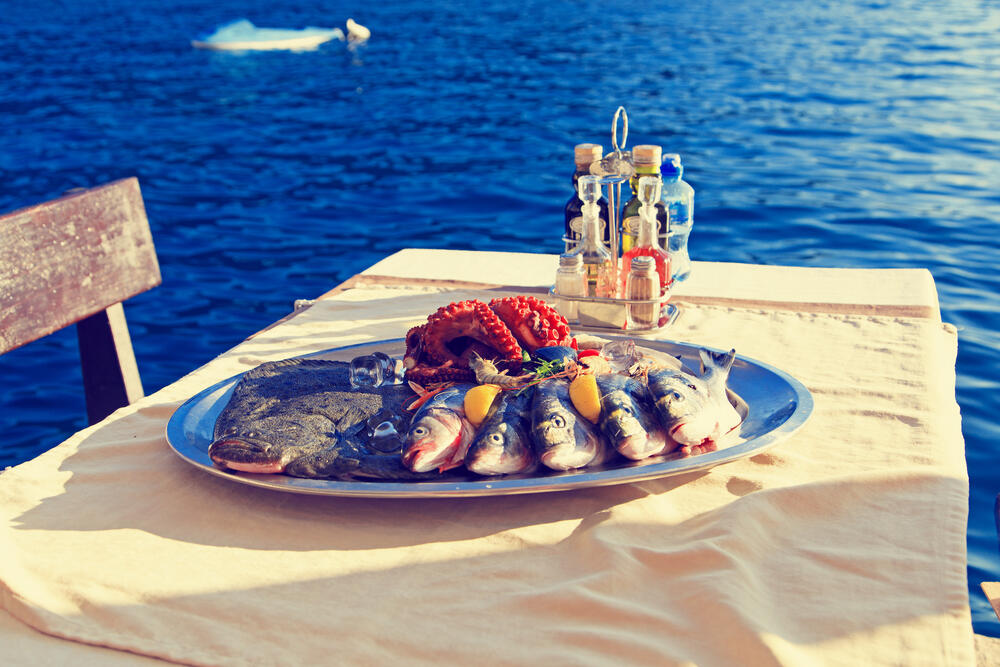
During summer in Montenegro's coastal towns, enjoy fresh seafood and vibrant salads. The Mediterranean climate is ideal for savoring Adriatic Sea delicacies like grilled squid, octopus salad, black risotto, and more in places like Budva. Pair your seafood with refreshing salads made from local ingredients like tomatoes, cucumbers, olives, and feta cheese—a true taste of Montenegro's coastal charm for seafood enthusiasts.
Winter Warmers: Hearty Stews and Soups
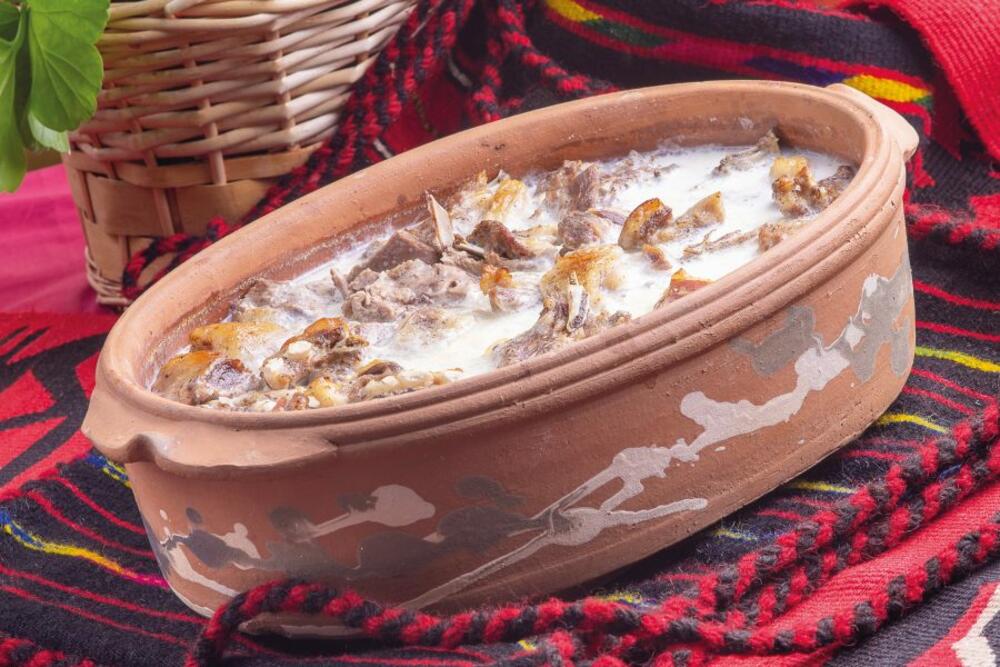
In the colder winter months, Montenegro's cuisine shifts to hearty stews and soups that provide comfort and warmth. Warm up with dishes like kuvani brav (boiled lamb), brav u mlijeku (lamb cooked in milk), and various bean and vegetable stews. These dishes are slow-cooked to perfection, allowing the flavors to meld together and create a comforting and satisfying meal. Montenegro's winter cuisine is the epitome of comfort food, showcasing the country's culinary heritage and providing warmth during the colder months.
Coastal vs. Mountainous Regions: A Culinary Contrast
Montenegrin cuisine offers a unique blend of coastal and mountainous flavors. Coastal dishes are Mediterranean-inspired with seafood delicacies, while mountainous cuisine features hearty meat dishes, stews, and soups for colder climates. Explore both regions to discover Montenegro's culinary diversity and unique traditions. Whether you prefer seafood or hearty meat dishes, Montenegro has something special for every palate.
Dining Etiquette and Cultural Insights
In Montenegro, understanding dining etiquette is pivotal for a complete culinary experience. Meal times hold significance, with lunch being the main meal of the day. It's customary to wait for the eldest or the host to start before eating and to maintain eye contact while toasting. Respect for food and local traditions is paramount; finishing everything on your plate shows appreciation. Embrace the leisurely pace of meals and immerse yourself in the rich tapestry of Montenegrin dining rituals.
Understanding Montenegrin Meal Times and Traditions

In Montenegro, meal times and traditions play a significant role in the country's culinary experience. Breakfast is a modest affair, often featuring yogurt and local pastries. Lunch is the main meal of the day, usually consumed around 3 pm, consisting of hearty dishes like stews or grilled meats. Dinner is lighter and is typically enjoyed later in the evening. Montenegrin dining customs emphasize the importance of family gatherings and savoring meals slowly, reflecting the region's rich heritage and community spirit.
Tips for a Genuine Montenegrin Dining Experience
Embrace Montenegrin dining culture by savoring traditional dishes at local family-owned eateries. Enjoy seafood delicacies along the Adriatic coast and hearty Balkan-influenced meat dishes. Pair your meal with Montenegro's olive oil and wines. Appreciate the rich flavors of Montenegrin recipes like Njeguši prosciutto and burek, and engage with waiters for recommendations to experience warm Montenegrin hospitality.
Are there vegetarian or vegan options available in Montenegrin cuisine?
Vegetarian and vegan options are available in Montenegrin cuisine, offering dishes like savory stuffed peppers, grilled vegetables, hearty bean stews, and fresh salads. Traditional meals can be easily adapted to suit these dietary preferences while still capturing the authentic flavors of Montenegro.
What is the average cost of a meal in Montenegro for tourists?
The average cost of a meal in Montenegro for tourists ranges from $5 (modest breakfast) to $20 (decent lunch), depending on the restaurant's location and type. In coastal areas, prices may be slightly higher due to tourism. Dining in local eateries can offer more budget-friendly options.
Bonus video:



